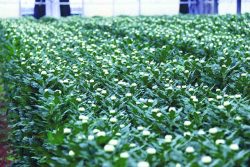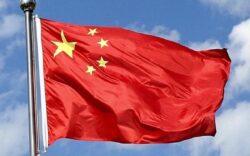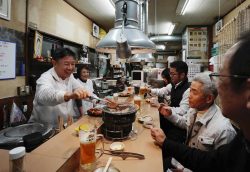Poor Catches Spur New Hope in Salmon Farming; Kushiro Port in Hokkaido Among Regions Stepping up Salmon Farming
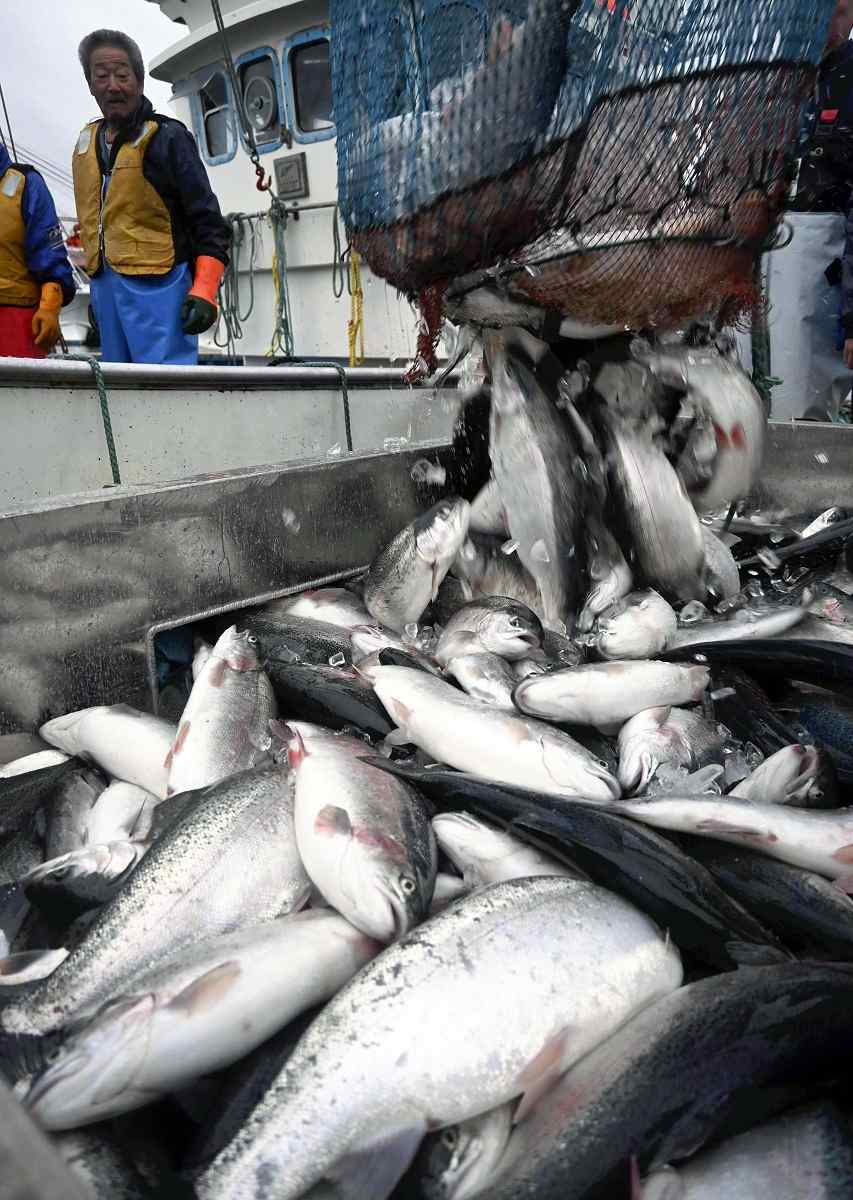
Rainbow trout harvested at Kushiro Port in November last year
14:28 JST, May 22, 2024
SAPPORO — Moves are being made throughout Japan to utilize salmon farming to address potential shortages arising from recent poor autumn salmon catches.
The nation’s more than 120 salmon farms have generated intense regional competition.
In the eastern part of Hokkaido, the ocean’s cold temperatures should provide fishers with salmon catches after shipments of Honshu salmon have dried up. However, recent ocean warming in recent years has brought up unexpected obstacles.
Fish farming
November last year saw the first catch of experimentally farmed rainbow trout at Kushiro Port in Hokkaido. A council comprising Kushiro City, a fisheries association, a research institute and others named the fish Kushiro Akane Salmon in the hope of giving the fish its own brand.
Behind the expansion of salmon farming around the nation is a slump in catches of major fish species. According to the Japan Fisheries Research and Education Agency, the number of autumn salmon that returned to the nation’s coasts and rivers in fiscal 2023 was 22.85 million, a quarter of the 88.79-million peak in fiscal 1996.
“The days of good catches coming to those who just wait are a thing of the past. Fish farming is becoming more and more important,” said Shigeki Himori, 70, chairman of the council.
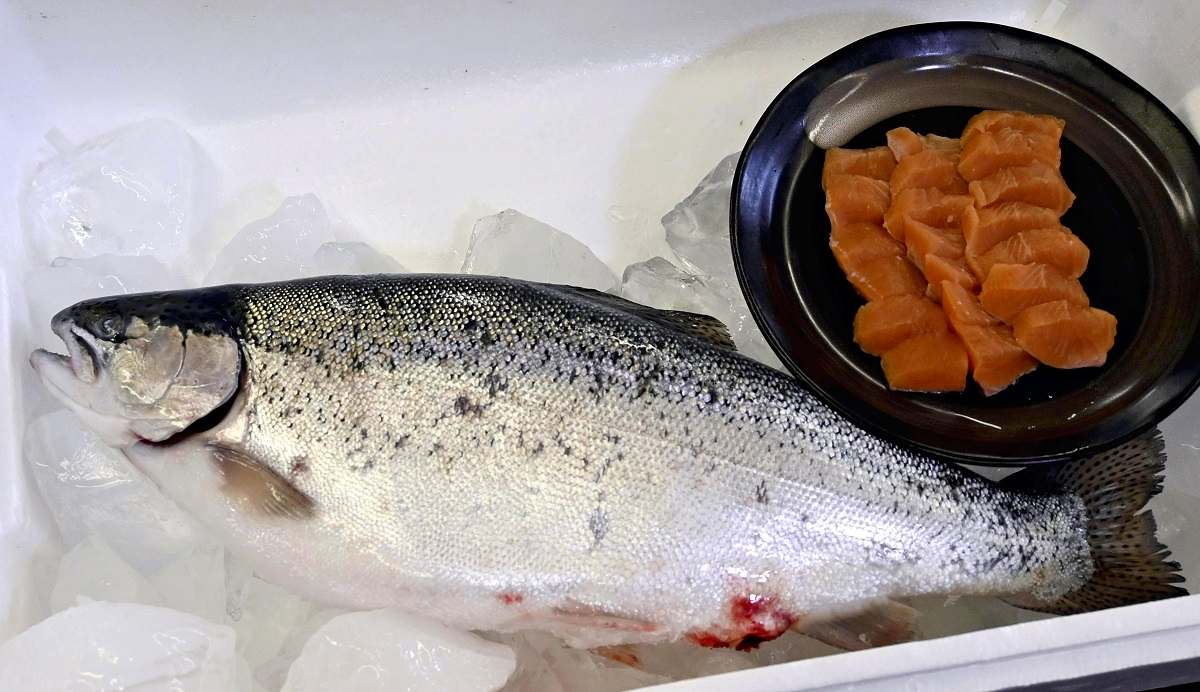
A farmed rainbow trout is seen at Kushiro Port in November last year.
Rising water temperatures
Farmed salmon is fatty and makes for good sashimi. In addition to the global fish-eating boom, the growing demand for salmon in Japan and abroad at conveyor-belt sushi restaurants is another reason why fish farming is taking off in various regions.
The number of sea- and land-based salmon farms in Japan as of April was 126, more than double the 54 of December 2015, according to a survey by Satoshi Imai, researcher at the agency’s Miyako office in Iwate Prefecture.
According to the Hokkaido prefectural government, serious moves to implement salmon farming began around 2019 in southern and eastern parts of Hokkaido. Salmon, which prefer relatively cold water temperatures of 8 to 20 C, is caught by spring in western Japan and until summer along the Sanriku coast of the Tohoku region.
In the eastern part of Hokkaido, where the cold Oyashio Current flows, there were hopes that salmon could be grown in large enough numbers to be shipped until autumn, when the supply of salmon from Honshu drops, so Hokkaido salmon can be sold at high prices.
However, the maximum water temperature at Kushiro Port rose to 23.9 C in the summer of 2023, well above the optimum temperature, and the fish did not grow well as a result. Only 2,086 of the 5,600 fish in fish tanks were harvested.
The rise in water temperature is believed to have been caused by the northward movement of the warm Kuroshio Current and the ocean heat wave that followed the retreat of the Oyashio Current, a phenomenon that in recent years has occurred frequently off the eastern coast of Hokkaido.
Regional color
To cope with the situation, the council will take remedial measures when they try again in fiscal 2024 to cultivate rainbow trout in Kushiro Port. Their juvenile fish will be grown to 800 grams, about twice the same size as the previous year, and moved into tanks when they become strong enough to withstand high water temperatures.
Tetsuya Yamazaki, director of the Hokkaido Research Organization’s Mariculture Fisheries Research Institute in Muroran, Hokkaido, said it is important to create added value when selling Hokkaido salmon, as competitive pricing is expected to intensify with farmed salmon from other regions in Japan and imported salmon. The institute has been providing guidance on cultivation techniques and cost reduction measures for the branding of Kushiro Akane Salmon and other marine products.
Efforts have also begun in various areas to add regional color, such as by mixing citrus fruits into fish food. “Success in this competitive environment depends on offering salmon unique to your region,” Yamazaki said.
"Business" POPULAR ARTICLE
-

Japan Govt Adopts Measures to Curb Mega Solar Power Plant Projects Amid Environmental Concerns
-

Core Inflation in Tokyo Slows in December but Stays above BOJ Target
-

Major Japan Firms’ Average Winter Bonus Tops ¥1 Mil.
-

Institute: 2026 Condo Supply in Tokyo Metropolitan Area Forecast to Increase by 2.2%
-

Mcdonald’s, Starbucks in Japan Move Away from Paper Straws Amid Customer Dissatisfaction
JN ACCESS RANKING
-

Japan Govt Adopts Measures to Curb Mega Solar Power Plant Projects Amid Environmental Concerns
-

Core Inflation in Tokyo Slows in December but Stays above BOJ Target
-

Major Japan Firms’ Average Winter Bonus Tops ¥1 Mil.
-

Tokyo Zoo Wolf Believed to Have Used Vegetation Growing on Wall to Climb, Escape; Animal Living Happily after Recapture
-

JAL, ANA Cancel Flights During 3-day Holiday Weekend due to Blizzard



